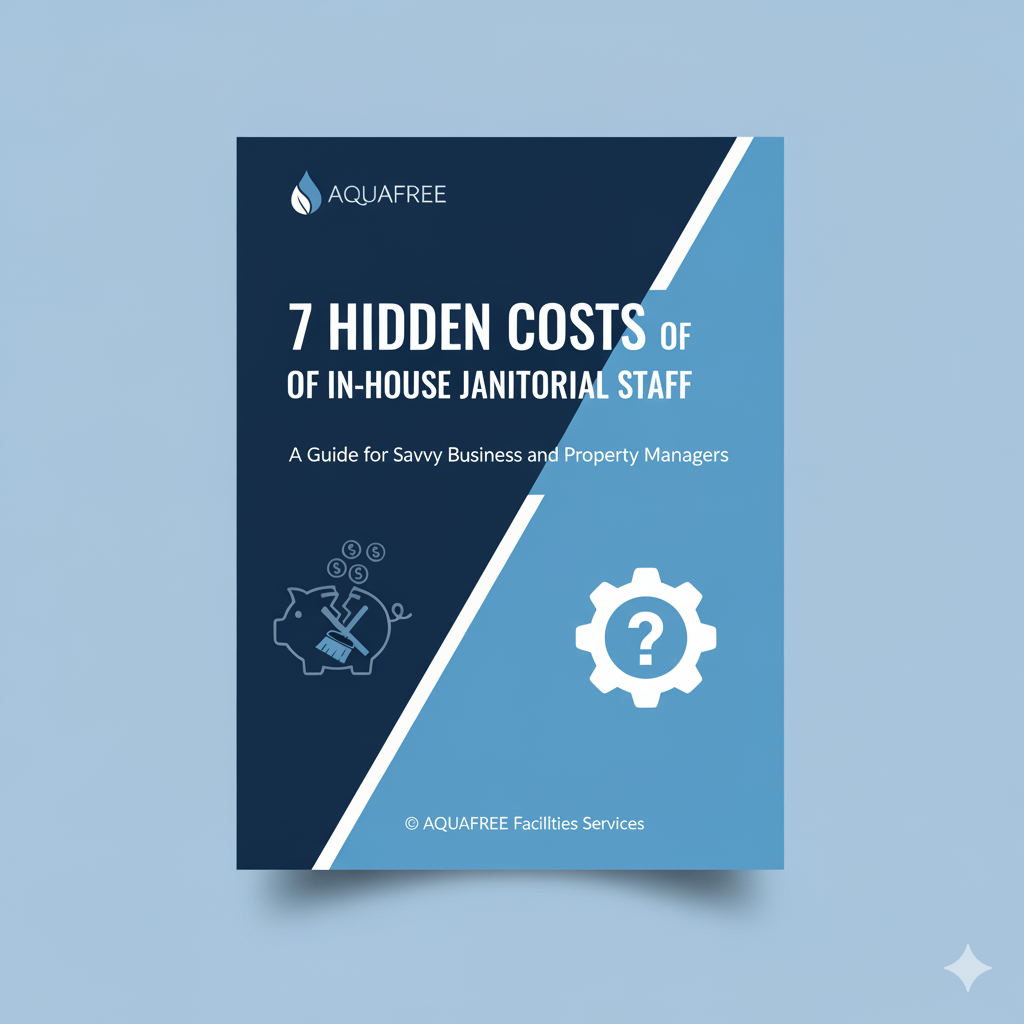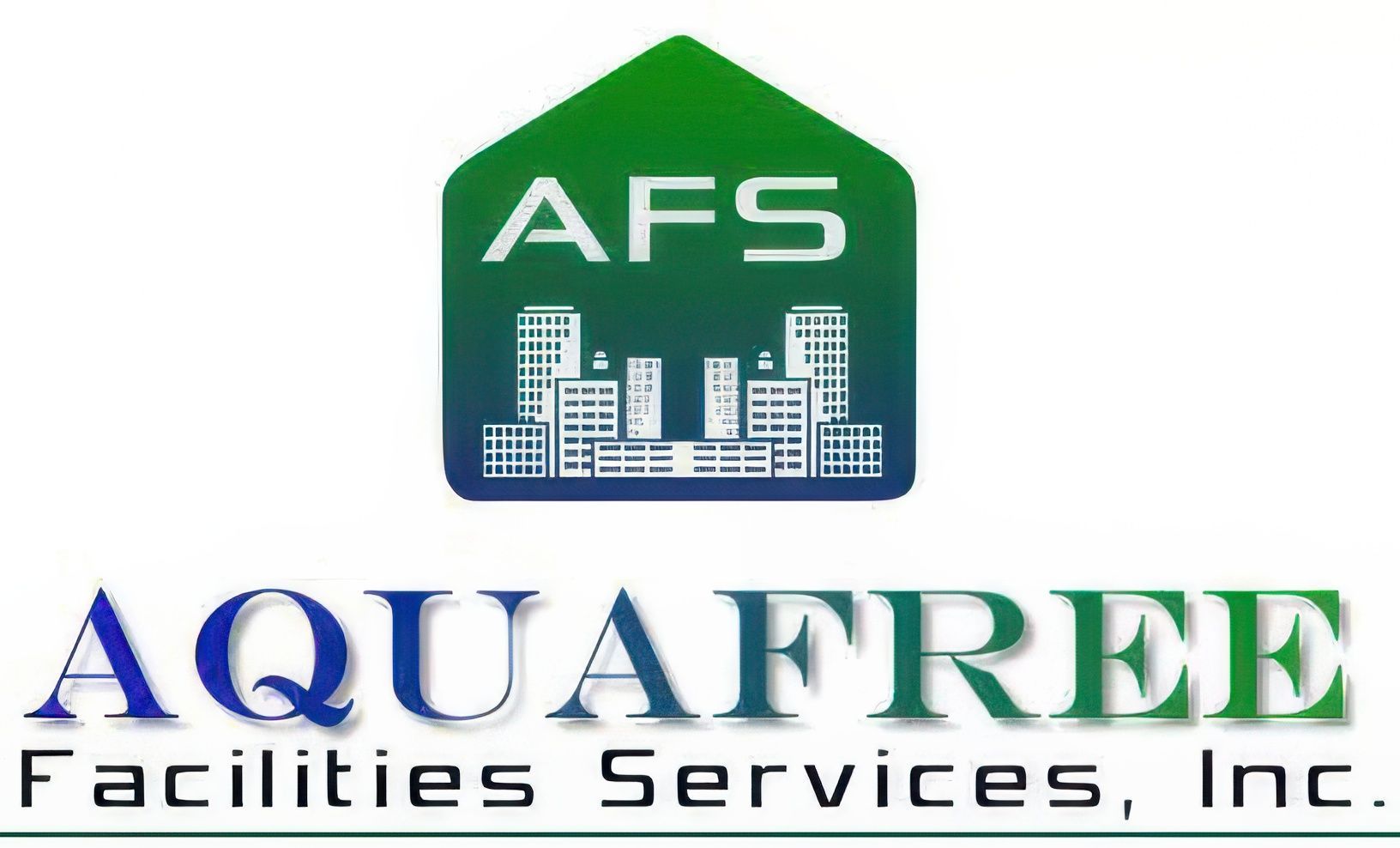7 Hidden Costs of In-House Janitorial Staff: And the ROI Calculator for Outsourced Facilities Maintenance
A Guide for Savvy Business and Property Managers

Introduction: Beyond the Obvious Clean
As a business owner or property manager, you understand the critical importance of a clean, healthy, and presentable environment. It impacts employee morale, client perception, regulatory compliance, and ultimately, your bottom line. Many organizations believe that managing janitorial services in-house is the most cost-effective solution. However, the true expense often extends far beyond salaries and basic supplies.
This guide will unveil 7 often-overlooked "hidden costs" associated with maintaining an in-house janitorial team. We'll then introduce the concept of an ROI Calculator for Outsourced Facilities Maintenance, empowering you to make a truly informed decision about the financial and operational benefits of partnering with a professional service like AQUAFREE.
1. Recruitment, Training, and Onboarding Costs
Hiring is never free. For every in-house janitorial position, you incur costs related to:
Advertising: Job board fees, classifieds, etc.
Time Investment: HR staff time for screening resumes, conducting interviews, background checks, and reference checks.
Onboarding: Paperwork, setting up payroll, initial IT access, and orientation.
Training: Lost productivity during initial training on your facility's specific needs, safety protocols, equipment use, and chemical handling. This is an ongoing cost as staff turnover occurs.
2. Employee Benefits and Payroll Overhead
Beyond a salary, every employee comes with a significant benefits package and associated administrative costs:
Health Insurance: Premiums can be substantial.
Paid Time Off (PTO): Vacation, sick days, and holidays.
Retirement Contributions: 401k matching, etc.
Taxes: Employer-paid social security, Medicare, unemployment taxes, and worker's compensation insurance.
Payroll Administration: The time and software required to process payroll accurately and compliantly.
3. Equipment Acquisition, Maintenance, and Storage
Professional cleaning requires specialized equipment, which isn't a one-time purchase:
Initial Purchase: Vacuums, floor buffers, carpet extractors, pressure washers, mops, buckets, carts, and more. These are significant capital expenditures.
Maintenance & Repairs: Equipment breaks down. Parts, labor, and downtime all add up.
Storage Space: Dedicated, secure space is needed for equipment, often in valuable square footage that could be used for other purposes.
Depreciation: The value of equipment diminishes over time.
4. Supply Procurement and Inventory Management
Maintaining a well-stocked cleaning closet is more complex than it seems:
Purchasing Time: Staff time dedicated to researching, ordering, and receiving supplies.
Bulk Ordering: Requires upfront cash outlay and significant storage space.
Waste & Spoilage: Mismanaged inventory can lead to expired chemicals or damaged supplies.
Cost of Goods: The actual price of disinfectants, paper products, soaps, trash bags, and specialized cleaning agents.
Eco-Friendly Sourcing: If sustainability is a goal, finding and vetting green products adds complexity.
5. Management, Supervision, and Quality Control
An in-house team doesn't manage itself.
Supervisory Time: A manager needs to oversee scheduling, performance, attendance, and task delegation.
Quality Inspections: Regular checks are necessary to ensure standards are met. This takes valuable management time away from core business functions.
Performance Reviews: Annual or semi-annual reviews require time and effort.
Conflict Resolution: Dealing with interpersonal issues or performance problems within the team.
6. Liability, Safety, and Compliance Risks
Cleaning can be hazardous work, carrying significant risks for employers:
Worker's Compensation Claims: Injuries from slips, falls, chemical exposure, or equipment accidents. These can lead to increased insurance premiums and lost productivity.
Safety Training: Ensuring compliance with OSHA regulations and other safety standards is crucial and time-consuming.
Environmental Compliance: Proper disposal of cleaning chemicals and waste.
Public Liability: If a visitor slips on a wet floor cleaned by an in-house staff member, the liability rests solely with your organization.
7. Inconsistent Quality and Lack of Specialized Expertise
Unless your core business is cleaning, your in-house team may lack the deep expertise of a dedicated service:
Varying Skill Levels: Quality can fluctuate depending on individual staff members and their experience.
Limited Specialized Services: Complex tasks like specialized floor care, window washing, or post-construction clean-up often require external vendors anyway, negating some of the "in-house" benefit.
Lack of Advanced Techniques/Equipment: Professional services continually invest in the latest technologies and methodologies for superior results.

